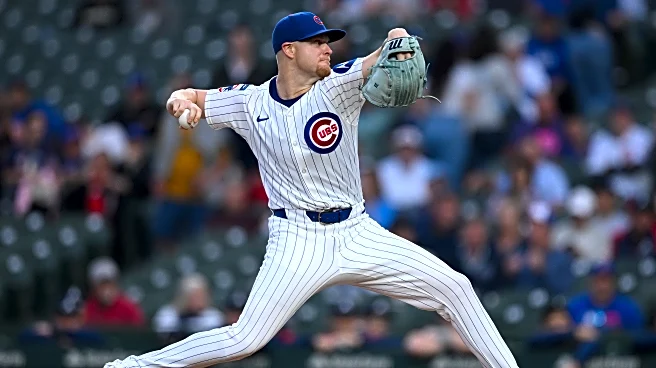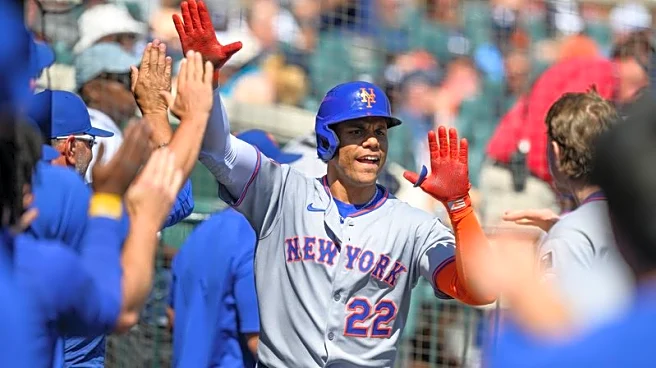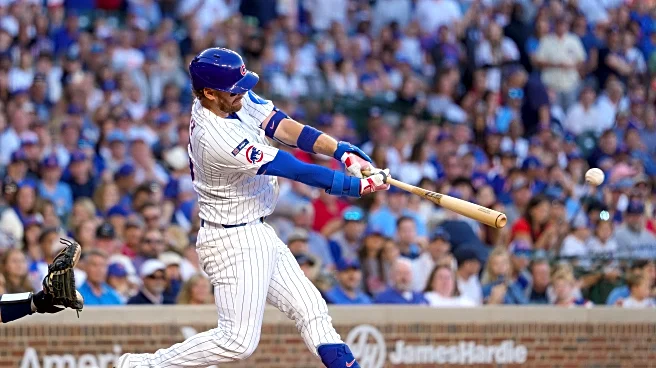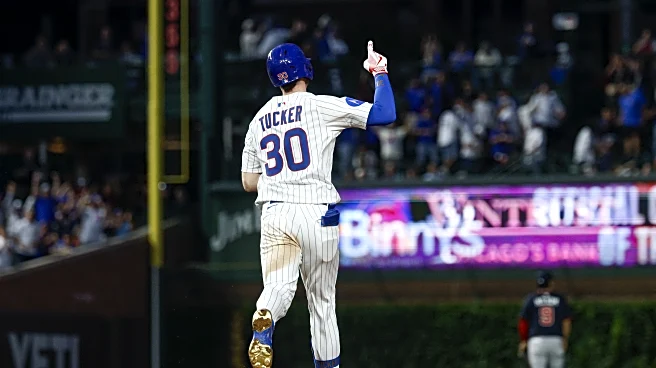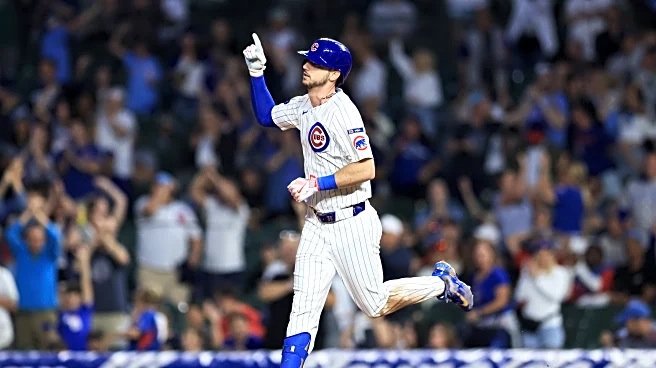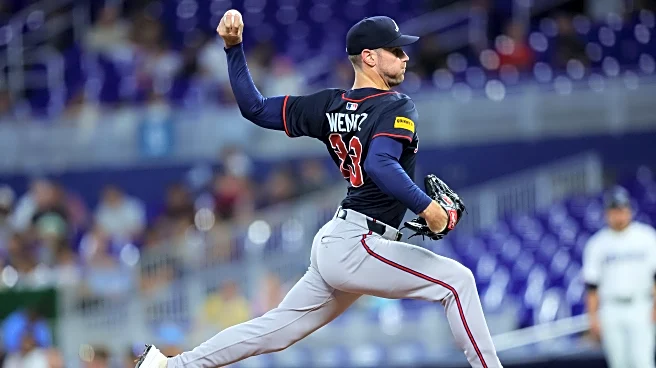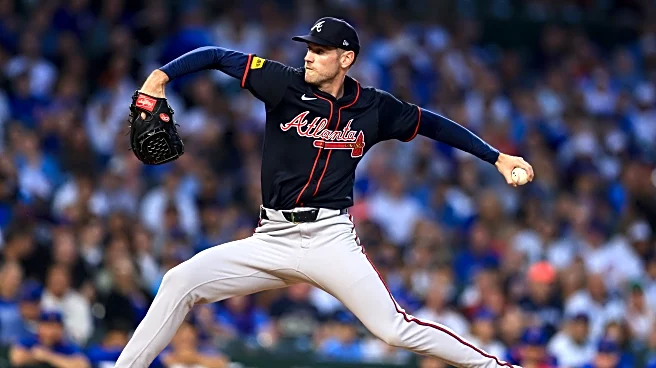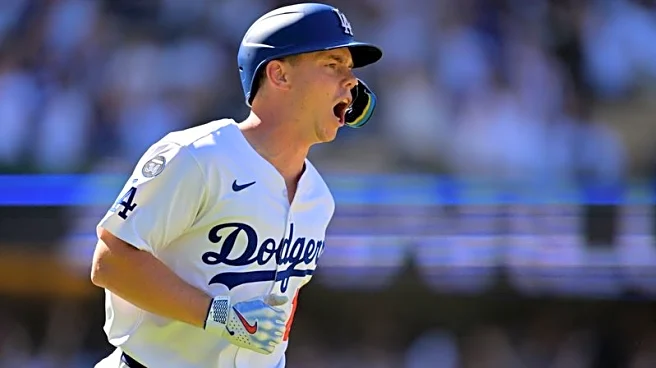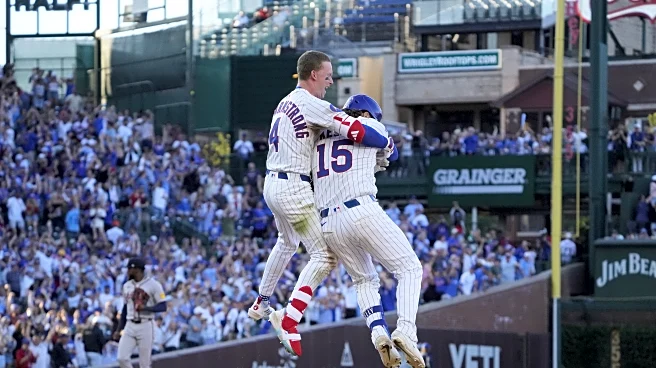
It’s Wednesday night here at BCB After Dark: the coolest hotspot for night owls, early risers, new parents and Cubs fans abroad. We’re so glad you decided to stop by tonight. Please come on in. There’s no cover charge. Let us know if you need anything. The hostess will seat you now. Bring your own beverage.
BCB After Dark is the place for you to talk baseball, music, movies, or anything else you need to get off your chest, as long as it is within the rules of the site. The late-nighters are encouraged
to get the party started, but everyone else is invited to join in as you wake up the next morning and into the afternoon.
The Cubs lost to the Braves tonight, 5-1. More on this below.
Last night, I asked you who you would have start game one of a playoff series, assuming that the Cubs could start anyone they wanted (i.e.—they had time at the end of the season to set up their rotation). Shōta Imanaga was in first place with 58 percent of the vote. Matthew Boyd was second with 22 percent and the other 20 percent picked Cade Horton. I wonder if those numbers would change after tonight’s start by Horton.
Here’s the part with the music and the movies. You can skip that if you insist. You won’t hurt my feelings. Much.
Since tonight’s film features a symbolic poster of trumpeter Lee Morgan at one critical point in the film, I thought we’d feature Morgan and a song he wrote. I’m not doing his famous tune “The Sidewinder” because I’ve featured a few times before, but here is Morgan with Art Blakey and the Jazz Messengers on the BBC in 1965. This is “Lament for Stacy.” (Listed as “Theme for Stacy.” Maybe that’s an error or maybe they decided to change the name of the song for this performance. I don’t know.)
Director Spike Lee has a new movie out called Highest 2 Lowest, which Lee calls a “reimangining” of the 1963 Akira Kurosawa film High and Low (Tengoku to Jigoku). So it would be a good time to look back at this Kurosawa police procedural, which starred Toshiro Mifune and Tatsuya Nakadai about a kidnapping in Yokohama.
The Ed McBain novel King’s Ransom, which High and Low was based on, is about the kidnapping of a friend of the wealthy protagonist’s son. The kidnapper grabbed the wrong child. Nevertheless, the kidnapper insists on the rich man paying the ransom anyway, but doing that would bankrupt him.
Kurosawa kept that basic idea and pretty much threw everything else out. Kidnapping was a huge issue in Japan that dominated the headlines in the early sixties. There were several high-profile kidnappings and the punishment for the crime, which was one to ten years in prison, wasn’t much of a deterrent. Modern audiences tend to miss this bit of social commentary, where Kurosawa is definitely throwing his support behind increasing the penalties for kidnapping. This leniency also becomes a major plot point in the second half of the film.
But Kurosawa adds to the McBain plot a commentary on the increasing wealth and prosperity of postwar Japan and how the spoils of that wealth were unequally distributed. This is the “high” and the “low” of this film. In fact, the Japanese title of the film translates to “Heaven and Hell,” which drives home this point even more directly. But the “high” of this film is no paradise. In fact, Mifune’s Gondo is portrayed as a man whose wealth and power brings him almost as much misery as the kidnapper Takeuchi, (Tsutomu Yamazaki) who is a young man whose poverty and desire for wealth bring him to ruin.
Mifune’s Gondo is a wealthy corporate official of a shoe company. He’s a self-made man who worked his way up to the board room after starting as a simple cobbler. He’s proud of the way the company makes high quality shoes at a high price.
The rest of the board of directors, however, see things differently. They want to produce lower quality shoes at a cheaper price that will sell quickly and need to be replaced quicker, leading to higher profits. They ask Gondo to join them in their plan to remake the corporation, but he refuses.
Gondo hatches a plan to borrow a ton of money from some shady people to enact a hostile takeover of the corporation. He puts up everything he owns as collateral. But in the middle of this maneuver, Gondo gets a phone call revealing that his son has been kidnapped.
As it turns out, it was actually his lowly secretary’s son who was kidnapped by mistake. No matter—the perpetrator says that Gondo has to pay the ransom anyway.
So the first half of the film is dominated by Gondo’s dilemma: does he pay the ransom and financially ruin himself for another man’s child, or does he refuse and see the innocent child murdered?
The film is divided into two parts—the “high” first half that takes place in Gondo’s luxury house that sits on a hill overlooking Yokohama. The second half is a police procedural where the team lead by Inspector Tokura (Nakadai) try to catch the kidnapper and find a crime they can put him away for that would carry a stiffer sentence than kidnapping. In between these two halves, there is a thrilling action sequence on a train where the ransom is paid and the child is recovered.
If you’re used to seeing Mifune as a wild samurai, his portrait of Gondo is quite different. Gondo is a quite reserved man who only rarely allows himself to have a show of emotion. In fact, the whole first half of the film is very restricted, with the action rarely leaving Gondo’s living room, which dramatically overlooks all of Yokohama.
I watched the commentary track by Kurosawa scholar Stephen Prince (C’mon. You don’t think I come up with all these great insights on my own?) and he points out the ways that Kurosawa shoots the “High” part to take best use of the widescreen format by dividing it into sections, often with two or three things going on at once in the shot. I’m not going to go into a lot of detail because it wouldn’t make sense without screenshots, but it does take what could be a very talky and static first half of the movie and gives it some kinetic energy.
Despite Mifune being the big star of the film, Gondo mostly disappears in the “Low” second half of the film. Instead, the “Low” part focuses on the police procedural game of cat and mouse between Inspector Tokura and Takeuchi, the kidnapper. Here the big reference is director Jules Dassin’s 1948 noir masterpiece The Naked City, a film that Kurosawa very much admired. The “low” (or “hell’) second-half of the movie goes through the rough streets of Yokohama, including a drug den, a sketchy nightclub filled with American sailors (literally. The extras were mostly American sailors) and a garbage incinerator. It’s there that Kurosawa features his first use of color in any of his films—a puff of pinkish-red smoke that stands out in the black-and-white skyline of Yokohama. Not everything in the second half was shot on location—a few scenes were on sets—but most of it captures the energy and danger of this postwar Japanese boomtown.
Kurosawa decries the loss of many traditional Japanese values in High and Low and he’s certainly critical of capitalism and income inequality. But he never uses those points to excuse the actions of the kidnapper, who is mostly an enigma in the film. The only real motive he is given is jealousy of Gordo’s wealth and status. He isn’t given any backstory that would excuse his actions.
Playing the kidnapper Takeuchi was the film debut of Yamazaki, who gives an impressive performance of a psychopath. He’s cold, cool and calculating, and in the commentary track, Prince makes an apt comparison between Yamazaki’s Takeuchi and Robert Walker’s Bruno in Hitchcock’s Strangers on a Train. (The big difference is that Bruno was a talker and Takeuchi is mostly silent.) The final confrontation between Gondo and Takeuchi at the end of the film is both powerful and leaves far more questions than it answers. Audiences who like answers at the end may be frustrated, but if you’re looking for all the ends to be tied up from the guy who directed Rashomon, you’re in the wrong place.
High and Low was considered a bit of a disappointment when it came out in 1963, especially from Western critics who expected morally-ambiguous samurai and not a police procedural from Kurosawa. But even though the kidnapping laws in Japan have long since been reformed—thus neutering one main point of the film—the trenchant criticism of inequality and the way capitalism disconnects the artisan from their product—remains strong. It’s now rightly considered one of Kurosawa’s classics.
I have no idea how good Lee’s “reimagining” is, although the reviews are mostly positive. I’ll most likely watch it when it appears on Apple TV this weekend. But I will say that I don’t think there’s much Lee could have done to improve on the original.
Here’s the orignal trailer for High and Low.
High and Low is on HBO Max and Criterion. And available to rent from the usual suspects.
Welcome back to everyone who skips the music and movies.
You’re probably familiar with tonight’s Cubs’ game. Cade Horton, who is making a strong late bid for Rookie of the Year, pitched five innings of no-hit baseball against the Braves tonight. However, with the Cubs only leading 1-0 and with Horton only having thrown 75 pitches, manager Craig Counsell went to the bullpen. Ben Brown managed to keep the no-hitter going into the seventh inning, but he gave up a single and a walk in the seventh. Then Counsell summoned Drew Pomeranz, who gave up a three-run home run to Ha-Seong Kim, of all people. That was pretty much all she wrote for tonight’s game and the Cubs lost 5-1.
So tonight’s question is: Should Counsell have pulled Cade Horton after five innings and 75 pitches? The obvious reason not to is that the Braves couldn’t touch Horton and he’d only thrown 75 pitches. You can argue that the Counsell could and should have brought in someone other than Ben Brown, but Daniel Palencia was probably down after throwing 20 pitches the night before and Counsell was likely hoping Brown and Pomeranz could get him to the eighth inning where Brad Keller and Andrew Kittredge could close out the game. But that didn’t work. Obviously.
The case for taking Horton out for a reliever after five innings is that it’s more important that Horton wins a game in October than has a no-hitter in September. Horton is now up to 103 2/3 innings this year in the majors and another 29 innings in the minors. That’s 132 2/3 innings. Horton had never thrown more than the 88 1/3 innings he threw in 2023 before this year. Not even in college, where he was mostly sidelined by Tommy John surgery. Last year, he was limited to 34 1/3 innings after a lat strain and didn’t pitch after June 4.
So being cautious with Horton’s health was the biggest reason to pull Horton after 75 pitches. But another reason to not push Horton is that this game really didn’t mean much in the greater scheme of things. As much as we still all hope that the Cubs catch the Brewers for the division title, you have to admit that risking Horton’s health on the small chance that they do so is a bad bet. On top of that, the Padres and Mets also lost tonight, which means that the Cubs still have a big lead for the first Wild Card (4 games) and an even bigger lead to clinch a playoff spot (9 games over the Giants). So while the Cubs losing tonight’s game may be annoying, it’s unlikely to have any lasting consequences.
But “unlikely” doesn’t mean “won’t.” Tonight’s game could end up being critical. And the Cubs do want to keep alive those chances of catching Milwaukee. Maybe Horton wasn’t going to go nine innings and complete the no-hitter by himself, but would it have really hurt to have him throw one more inning? Then Brown, Pomeranz and whomever would only have to cover the seventh inning before Keller and Kittredge could pitch the eighth and ninth.
And it was a no-hitter. Combined no-hitters may not be as good as single-pitcher ones, they’re still a lot of fun.
So was it the right decision to pull Cade Horton after five innings?
Thanks for stopping by tonight. A big thanks to everyone who voted and commented this week. Please get home safely. Tell your friends about us. Recycle any cans and bottles. Tip your waitstaff. And join us again next time for more BCB After Dark.
